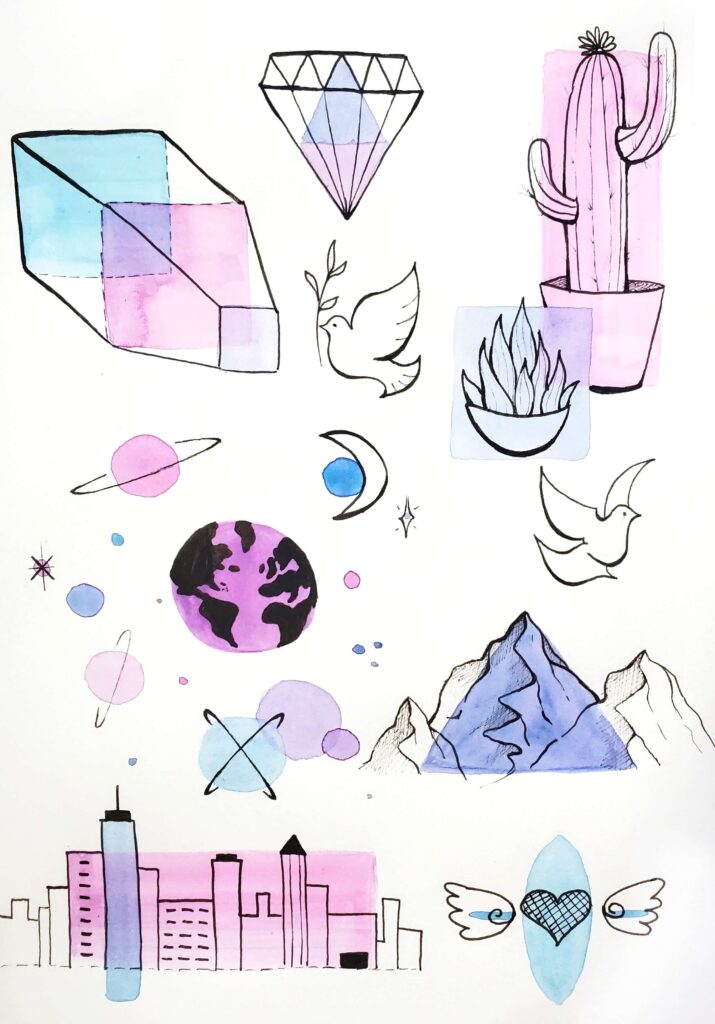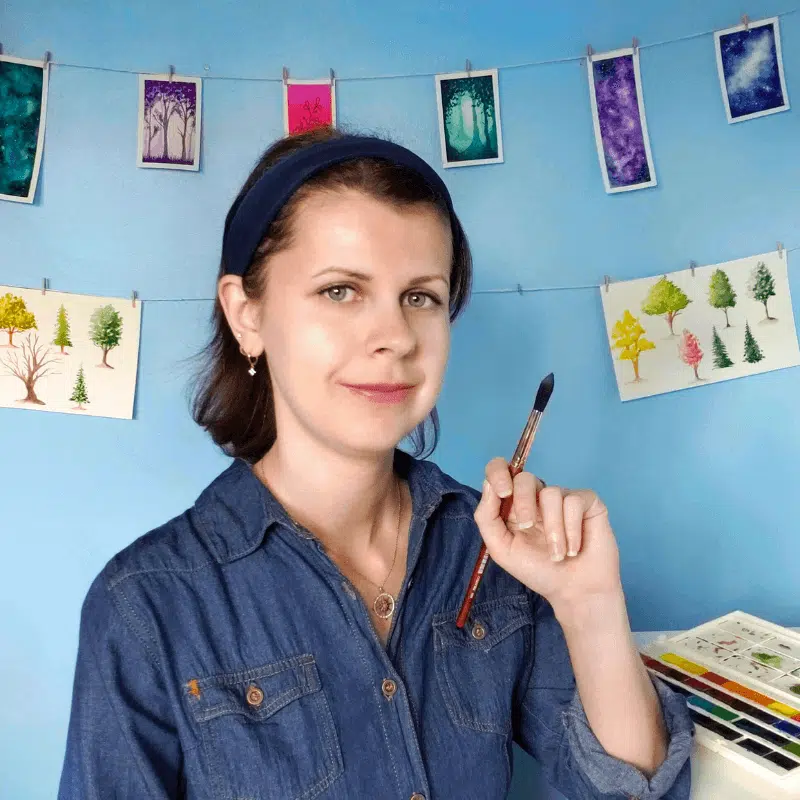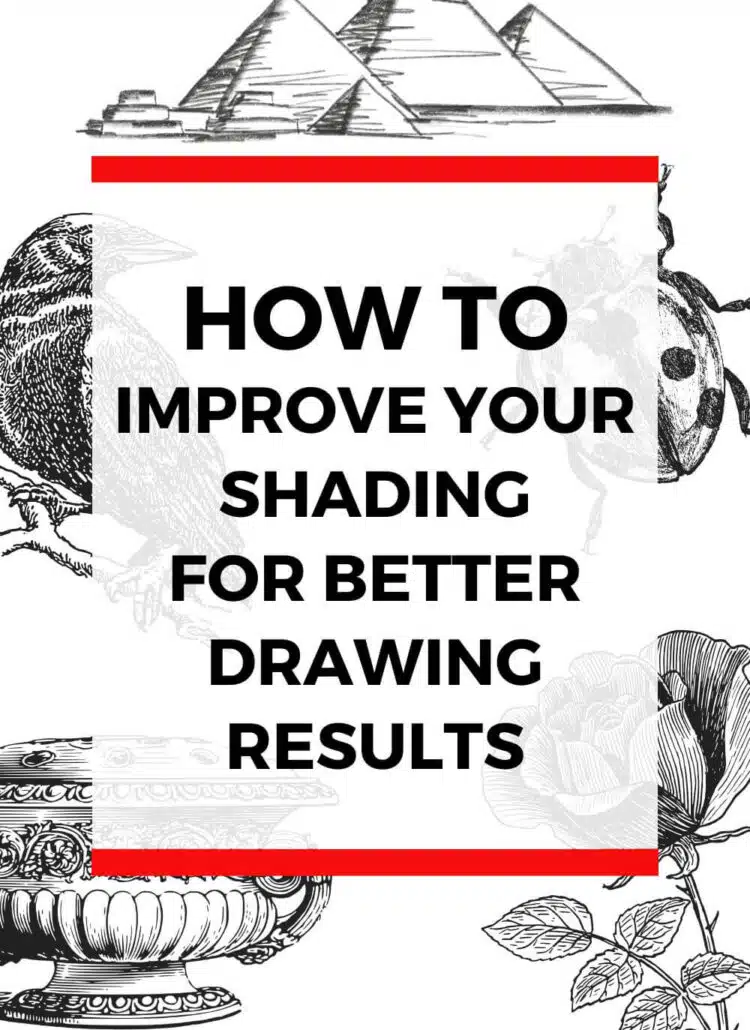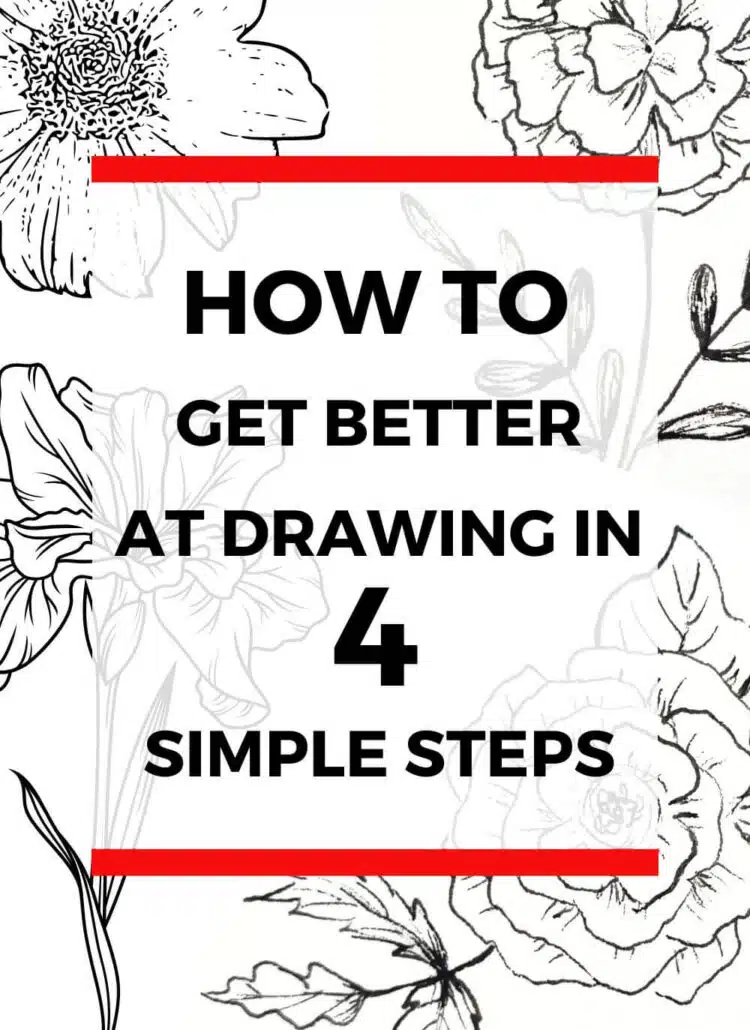What Is intuitive art?
As an artist, you know it can be difficult to come up with new drawing and painting ideas.
Especially when your well of inspiration has run dry.
At times like these, the best way to overcome art block is to create intuitive art.
Intuitive art is the act of tapping into your creative intuition as a means of producing art. By doing so, you’re able to create art in a non-judgemental way that grants you the liberty of experimenting and making mistakes. The goal is to make art without overthinking the creative process.
As a result, the creative process feels more liberating and free-flowing than when you rely on using reference images to create art.
Table of Contents
How Do You Make Intuitive Art?
For some artists, intuitive art may seem like an elusive concept.
But it’s actually much simpler to make than you may think.
You make intuitive art by creating from your heart and tuning into your feelings. Since art is intuitive, you create art spontaneously without a plan. You go with the flow of ideas that naturally come to you. In this way, intuitive art is all about feeling rather than thinking.
In other words, you switch from the analytical left-brain and tap into the creative, intuitive potential of the right-brain.
That’s why it’s impossible to make mistakes when you create from your intuition because there are no standards or expectations to adhere to.
The creative process feels more liberating and free-flowing than when you rely on using reference images to create art.

Action Step: Learn how to connect with your intuition and create mixed media art by enrolling in Foxsy’s engaging online course Intuitive Art: Loosen Up and Break Creative Block!
Why Do Intuitive Art: The Benefits
So, what is intuitive art? It’s a means of self-discovery, self-expression, and personal exploration.
Fortunately, artists experience many benefits from tapping into their intuition as their source of creative energy.
For example, some of the best intuitive art advantages include:
- Learning how to loosen up with your art by giving yourself permission not to be perfect.
- Drawing and painting more often because you learn not to rely on references.
- Conquering your fear of the blank page because you’re less afraid to make mistakes.
- Finding your voice by exploring your artistic style.
- Spending less time relying on inspiration to motivate you.
- Knowing how to create art even when you’re experiencing art block.
- Enjoying greater creative and artistic freedom.
- Understanding yourself, your feelings, and your intentions more deeply.
- Trusting your imagination and not being attached to the final artwork
Luckily for you, art intuition can be improved or developed even if you don’t have experience as an intuitive artist.
But it takes time to develop, just like any skill. That means you need to schedule some time to practice making intuitive art.
How Do You Start an Intuitive Painting or Drawing?
Now that you know what is intuitive art, it’s time to take action.
There are many intuitive art techniques that can help you render a painting or drawing.
There is no specific way to start an intuitive painting or drawing because there is no order in which to creative intuitive art. The best method is to tap into your intuition and then lay down colours, shapes, patterns, or textures in whatever order comes naturally and spontaneously to you.
The biggest takeaway is to create your art in a safe environment that is free of judgement and criticism.
So let loose, don’t overthink the creative process, and have fun making art!
This article originally appeared on Foxsy.

Miranda Balogh
Artist & Online Educator





Leave a Reply